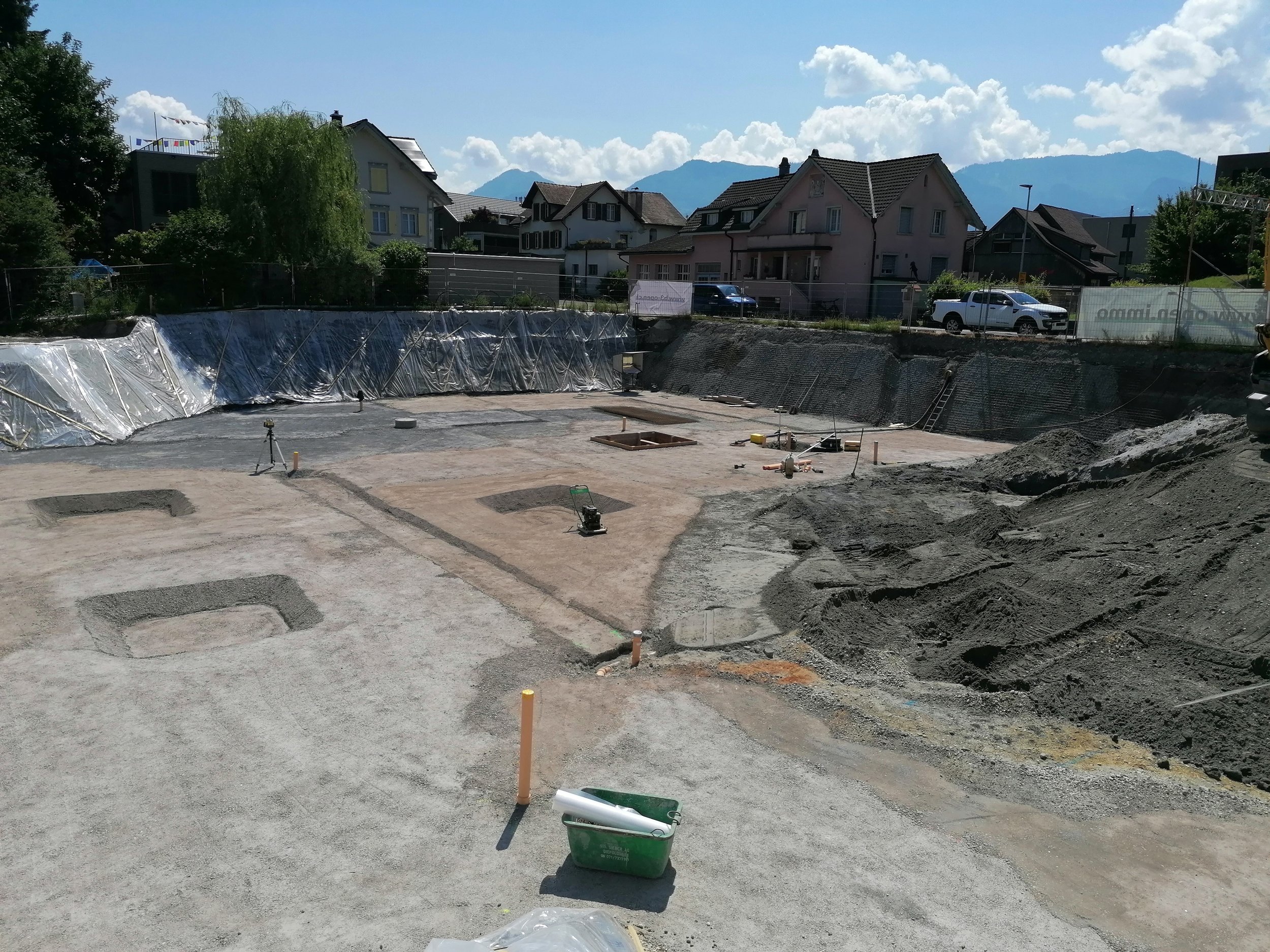Fact sheet excavation
Key Facts A4-5 excavator 100 kW/ truck transport 10 km
CO₂ emissions: 1.34 kg/m³
Transport CO₂ emissions: 1.38 kg/m³
Specific weight: 1500 kg/m³
-
Excavation is the material below the topsoil and subsoil
Excavated material consists of rock and stone that is broken out of the ground mechanically or by blasting as part of the construction work
Excavation may also contain fines depending on geology
Floors are the basis for the load-bearing capacity of every building and are the central component of the foundation and are planned and developed first
Excavated and excavation material is produced during the excavation of building foundations and consists of soil: crushed rock and boulders or loose rock, gravel and sand
If the construction site is located on an anthropogenic site, the excavated material may also contain other components such as mineral construction waste or the remains of old waste deposits
-
All typical types of soil are included in the Ökobaudat/KBOB and are treated in the same way, e.g. loamy soil, sandy soil, clay soil, etc.
Separate containers for construction waste Separate life cycle assessment
Request weighing certificates from the landfill site
-
simplified per m³:
Module A5 Installation takes into account the diesel consumption required for soil excavation (0.3091 kg diesel per m³ of sandy soil) and the associated emissions: Carbon dioxide, carbon monoxide, nitrogen oxides, NMVOC, dust particles, sulphur dioxide.
Data set takes into account neither excavator production nor disposal of the excavator
CO₂ emissions module A5: 1.34 kg
-
Module A4 Transport refers to the transportation of 1 t of goods over a distance of 1 km by Euro 5 truck with 20 - 26 t gross vehicle weight and 17.3 t payload and 85 % capacity utilization
Extraction and processing of the fuel is included
Manufacture of the vehicle is not included in the balance sheet
CO₂ emissions module A4: 0.09213 kg/tkm
-
At around 50 million tons per year, excavated material is by far the largest volume of waste in Switzerland
transportation is associated with high emissions
disposal takes up a lot of space in gravel pits and landfills
may be contaminated with various pollutants
Material must be analyzed for possible pollutants during construction work on plots with an entry in the register of polluted sites (KbS) (see Art. 16 VVEA)
-
CO₂ calculation according to ÖKOBAUDAT current version 2021-II from 25.06.2021 according to EN15804+A2
Ordinance on the Prevention and Disposal of Waste VVEA of 4.12.2015 (as at 1.1.2023)
Source graphic: FOEN - Federal Office for the Environment






